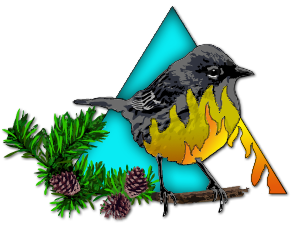Navigation

Upcoming Events
There are no events planned.
Third Annual Burning Issues Workshop and Michigan Prescribed Fire Council Annual Meeting
“In Sickness and In Health: Addressing Tough Decisions in Applying Fire to Degraded Habitats and Declining Species in the 21st Century”
This wildland fire workshop was designed to enable land managers, researchers, resource specialists, biologists, ecologists and fire practitioners an opportunity to hear and learn from different areas of expertise in a format designed to identify gaps in knowledge and communication, and work toward solutions to issues that complicate our collective wildland fire work.
Location: Fort Custer National Training Center (FCTC), Augusta, MI
Agenda:
Over the two days we explored four topic areas that are relevant across the State of Michigan and the Upper Midwest, and had interactive opportunities including panel discussions and breakout sessions.
Burning Issues Workshop 2017 Presentations (In order of presentation):
Burning Issues Workshop 2017 Introduction
Keynote Speaker: Dr. Doug Ladd, The Nature Conservancy Missouri Field Office
Applying Fire to Degraded Habitats and Declining Species in the 21st Century: Pyromaniacs or Ecological Saviors?
TOPIC ONE: The "Perfect" Burn: Defining What Success Means To You or Your Organization
What is the "the perfect burn?” Interpretations of what makes a burn “perfect” varies dependent on objectives, agency/organizations, specialist views, level of fire science/fire implementation knowledge and experience, etc. However, in describing what we desire for the end result of a burn (do the fire effects meet the objectives and goals) we have the opportunity to talk about what we're looking for and what we hope to achieve, and separate out personal assumptions and expectations versus feasible effects.
Lee Osterland (MI DNR)
Enhancing the Landscape with the "Perfect Prescribed Burn"
Dr. Todd Aschenbach (Grand Valley State University)
The "Perfect Burn": Defining What Success Means To You or Your Organization
TOPIC TWO: Monitoring and Sharing Outcomes: Plotting to Get the Data You Need
In this session we will discuss how a monitoring program needs to be designed to meet specific needs, and how a monitoring program adapts over time to inform management decisions. We frame the development of a monitoring program by addressing these questions: What did you need to know? How did you do it? How well did it work?
Brian Stearns (USDA Forest Service – Huron-Manistee National Forests)
Fire and Fuels Monitoring
Clair Ryan (Midwest Invasive Plant Network)
MIPN Control Database: A Regional Tool for Sharing Control Method Outcomes
Michigan Prescribed Fire Council Overview
Managing Oak Ecosystems with Fire
This session sets out to answer a couple of big questions about oak-dominated ecosystems: 1) What is mesophication, and why has lack of fire made it difficult to regenerate oak today? 2) What does reintroducing fire help us do in oak-dominated ecosystems? and 3) How do we combine fire and other tools to meet management objectives? Speakers in this session have been addressing these questions in oak woodlands and forests across the eastern United States.
Dr. Greg Nowacki (USDA Forest Service, Region 9)
The oak regeneration problem in the Midwest….and the implications for oak ecosystem restoration.
Dr. Todd Hutchinson (USDA Forest Service – Northern Research Station)
Thinning and Burning in Oak Forests: A Tale of Two Sites.
Dr. Ben Jones (Pennsylvania Game Commission)
Building capacity to use prescribed fire for wildlife conservation and resilient landscapes.
Managing for Wildlife in Fire-dependent Ecosystems
The goals of prescribed fire or fuel reduction treatments may be to improve wildlife habitat, but fire management objectives and prescriptions are rarely defined by wildlife needs. This session will emphasize connecting fire management to wildlife needs. The research and case study are from northern lake states ecosystems, with general principles that can be applied to fire-dependent ecosystems south of the tension zone, as well.
Dr. Greg Corace (US Fish and Wildlife Service, Seney National Wildlife Refuge)
Fire-Dependent Mixed-Pine Ecosystems, Biological Legacies, and Wildlife: A Summary of Past and Current Research at Seney National Wildlife Refuge
Mark Monroe (MI DNR)
Prescribed Fires role in Elk Management in Michigan.
|
March 1 |
9:00-10:00 am |
Arrival and Check-in |
10:15-10:30 am |
Welcome; Overview of past Burning Issues and goals for 2017 Workshop; Overview of participant-driven breakout sessions |
10:30-11:30 am |
Keynote Speaker – Doug Ladd |
11:30-12:30 |
Lunch |
12:30-1:50 pm |
Plenary Panel 1: |
1:50-2:10 pm |
Short break – water, soda; collect topics for afternoon breakout sessions |
2:10-3:30 pm |
Plenary Panel 2: |
3:30-3:45 pm |
Short wrap up; vote on topics for breakout sessions |
3:45-5:00 pm |
Break & topic discussions |
5:00-6:00 pm |
Michigan Prescribed Fire Council happy hour |
|
March 2 |
8:30-8:45 am |
Welcome back; History of Michigan Prescribed Fire Council and the “Passing of the Torch” to the new Chair |
8:50-10:20 am |
Plenary Panel 3: Managing Oak Ecosystems with Fire |
10:20-10:40 am |
Break |
10:40-12 am |
Plenary Panel 4: Managing for Wildlife in Fire-dependent Ecosystems |
12;00-1:00 pm |
Lunch |
1:00-2:30 pm |
Breakout sessions: 1) fire and oak management; 2) fire and invasive species; and 3) barriers to prescribed burn implementation |
2:30-3:00 pm |
Wrap up |
For any questions please contact Jack McGowan-Stinski, mcgowan-stinski.1@osu.edu, 989-287-1734
Federal Training
Travel in conjunction with educational activities to become proficient or qualified in one or more areas of responsibility. 5 USC 4101(4) states that “‘training’ means the process of providing for and making available to an employee, and placing or enrolling the employee in a planned, prepared, and coordinated program, course, curriculum, subject, system, or routine of instruction or education, in scientific, professional, technical, mechanical, trade, clerical, fiscal, administrative, or other fields which will improve individual and organizational performance and assist in achieving the agency’s mission and performance goals.” - and - b) More than half of the time is scheduled for a planned, organized exchange of information between presenters and audience which meets the definition of training in section 4101 of title 5, United States Code.



.png)
